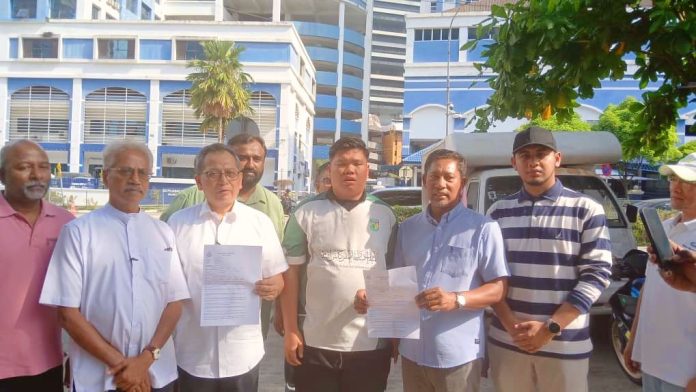By Amanda Yeo
WHILE the COVID-19 pandemic has accelerated the growth potential of both HealthTech and EdTech, inconsistent access to internet connectivity might prevent these two emerging start-ups in revolutionising healthcare and education system in Malaysia.
HealthTech is known as the use of technology (databases, applications, mobiles, wearables) to enhance the delivery, payment and consumption of healthcare, with the ability to catalyse the development and commercialisation of medicinal products.
EdTech refers to hardware and software designed to strengthen teacher-led learning in classrooms and improve students’ education outcomes.
Although the recent e-Conomy SEA 2020 report by Google, Temasek and Bain & Company stated that more Malaysians are engaging in digital services (ie one out of three Malaysians are new to digital services), the connectivity and affordability issue (ie 1 person-1 device) persist among urban and rural dwellers in Malaysia.
According to the United Nations Children’s Fund (Unicef) “Families on the Edge” survey that conducted in the low-cost housing flats around Klang Valley in Oct 2020, eight out of ten students did not have computers or laptops, while nine out of ten only had smartphones as their learning devices.
Asides from limited digital devices or Internet plans, rural citizens often face unstable internet connection. This can be seen in the rural areas of Sabah where the villagers have to pull up mineral bottles containing mobile phones with their “hot spot” function switched on – obtaining minimal cellular signals via at least 10m high of bamboo poles.
As rural students have to depend on a particular spot to gain internet access for online learning, Veveonah Mosibin from Pitas, Sabah had to climb a tree to have a reliable internet connection for her exams.
Also, a teacher from Sarawak had to lead a group of primary and secondary school students from his village in Nanga Sumpa and nearby Nanga Jambu in Lubok Antu on a jungle trek just for better internet coverage.
Meanwhile, due to limited access in digital devices or unstable internet connection, the doctors found challenging to communicate with patients via telemedicine – the use of information and communications technology (ICT) to improve patient outcomes by increasing access to care and medical information.
Despite the e-Conomy SEA 2020 report indicated the growth potential from both HealthTech and EdTech in the next few years, slower mobile speed in Malaysia compared to other neighbouring ASEAN countries might hinder Malaysia’s progress in developing an inclusive start-up ecosystem in the country.
Speedtest’s Global Index for December 2020 revealed that Malaysia ranked 7th at 25.6 megabits per second (Mbps) in terms of mobile speed, which is behind from Singapore (66.82Mbps), Thailand (51.75Mbps) and Vietnam (34.51Mbps).
To overcome the connectivity barriers, the Government has to expedite Budget 2021’s initiatives to realise the growth potential of HealthTech and EdTech in Malaysia, which are as follows:
- The Malaysian Communications and Multimedia Commission (MCMC) will allocate RM7.4 bil for the year 2021 and 2022 to build and upgrade broadband services;
- Allocate RM500 mil to implement Jendela to ensure the connectivity of 430 schools throughout Malaysia covering all states; and
- Provide RM1 bil Industrial Digitalisation Transformation Scheme through Bank Pembangunan Malaysia to boost digitalisation activities.
With the possibility of school closure due to the recent spike of the COVID-19 cases in the country, the Government perhaps could modify the current provision of data credit.
Instead of giving every Malaysians free 1GB data daily, MCMC could work with Department of Social Welfare (JKM) – providing unlimited data for underprivileged communities to enjoy online learning and seek for online health consultations.
Although Ministry of Education (MOE) introduced “Kelas@Rumah” and Digital Educational Learning Initiative Malaysia (DELIMa) to assist students in following up education syllabus and acquiring future skills, teachers are facing difficulties in conducting engaging lessons with students virtually when schools closed during the past few months.
Due to a sudden pivot towards online learning, teachers only could apply simplified teaching methodologies such as video conferencing to facilitate online teaching. Many teachers could not adopt innovative teaching methodologies (ie multimedia, gamification and virtual collaboration) as they either do not have skillsets to apply in their online teaching or limited fund to integrate innovative methodologies into current curricula.
To overcome the online learning barriers, MOE perhaps could work with EdTech providers – providing more online tools and question banks for teachers and students to access. Teachers could also automatically grade the assignments and exams through the online platform.
If school closure re-introduces, the Government could rent empty halls or co-working spaces in the country to provide underprivileged communities with a conducive learning environment to study.
As many low-income households do not have extra money to buy nutritious food and digital devices, the Government perhaps could provide free nutritious meals and laptop – ensuring the well-being of underprivileged students are taken care of during the school closure.
In turn, the owners of empty halls or co-working spaces could weather the health crisis while ensuring standard operating procedures (SOPs) is observing at all times.
As telemedicine is a relatively new approach for patients to receive advice and prescriptions from certified healthcare providers via text messaging or video calls, Ministry of Health (MOH) could arrange some doctors and HealthTech providers to have door-to-door visits in underprivileged communities – explaining the benefits of telemedicine.
However, MOH also needs to indicate the importance of providing both online and offline healthcare services to underprivileged communities. This would allow patients to seek in-person care if their condition is getting serious.
To safeguard patient outcomes, MOH and MCMC need to develop a regulatory framework that involves healthcare data, data privacy and medical devices for HealthTech providers in Malaysia.
In turn, HealthTech providers could provide their services in a secure environment and build more trust among medical providers and patients.
In addition, MOH could work with HealthTech providers to implement an electronic medical record system in 145 government hospitals nationwide. It would provide convenience for the doctors to find the patient records, thus increasing the treatment efficiency.
By utilising RM500 mil worth of High Technology Fund under Budget 2021, both HealthTech and EdTech providers in Malaysia would be able to unleash their potential – creating an open ecosystem for every Malaysian to enjoy the benefits from educational and healthcare technologies. – April 20, 2021
Amanda Yeo is Research Analyst at EMIR Research, an independent think tank focused on strategic policy recommendations based on rigorous research.
The views expressed are solely of the author and do not necessarily reflect those of Focus Malaysia.









